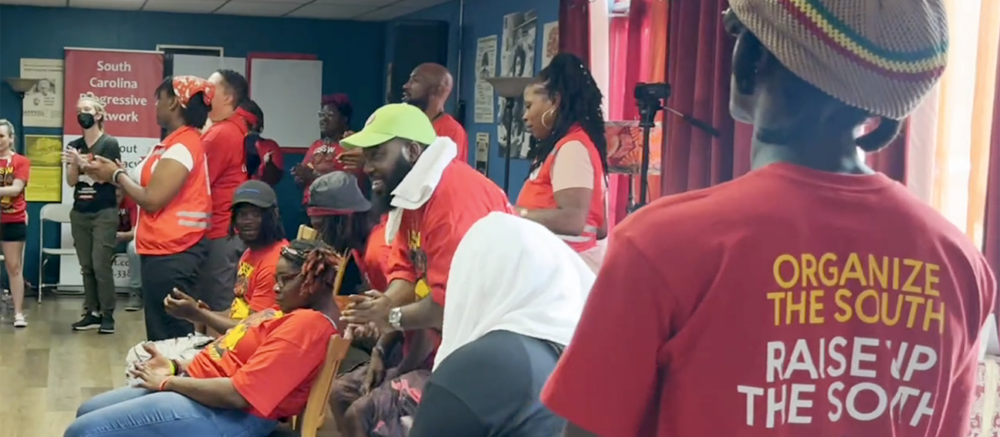By Glenn Carroll
Coordinator, Nuclear Watch South
Without a word of public debate, nuclear weapons became a seemingly inevitable fact of life and death on our planet. After World War II ended with two single bombs destroying the Japanese cities of Hiroshima and Nagasaki, The Bomb became big business with vast factory complexes on government reservations in several states across the country.
A government agency, now called U.S. Department of Energy, was formed to oversee private contractors who churned out no less than 30,000 nuclear warheads over the next four decades and established the nuclear industry as an economic force in human affairs.
A people’s movement to “Ban the Bomb” formed instantly in response to the wartime bombing of Japan, and to the “test bombings” on the lands of the Western Shoshone Nation in Nevada and Utah and the Pacific islanders of the Moruroa Atoll.
From protests on the street to civil disobedience at weapons sites, the public has been vocal and insistent that our only reasonable option is to abolish nuclear weapons. Indeed, in 1996 the World Court issued a landmark decision defending this basic ethic when it declared the manufacture, possession or use of nuclear weapons to be illegal.
The Cold War bomb factories were built in secret in the 1940s and 1950s. They operated without public oversight until the Cold War ended in 1991, when crumbling Russian and U.S. nuclear bomb factories and reactors were forced to shut down.
With the Cold War’s end, shocking security issues and environmental contamination throughout Russia and the U.S. bomb complexes were discovered.
Huge inventories of U.S. nuclear waste and weapons-grade plutonium had piled up and were stored in slipshod, temporary containers — even cardboard boxes tossed into landfills.
The U.S. is for the third time seeking permission from its people to rebuild the nuclear weapons complex. There are eight sites that would be involved in the current DOE vision: Savannah River Site near Augusta, Oak Ridge in Tennessee, Los Alamos and Sandia labs in New Mexico, Pantex in Texas, the Kansas City Plant, Lawrence Livermore in California and the Nevada test site.
There are literally dozens of facilities proposed to be spread around at these eight sites, and the sites are being pitted against each other to lure DOE to set up the new facilities there. SRS, for example, is competing against Los Alamos for a consolidated plutonium center.
Thanks to the National Environmental Policy Act, DOE is now required to hold public hearings for an environmental impact statement before it can build new bomb factories. The public has spoken clearly and unequivocally at each opportunity that we reject nuclear weapons under any and all circumstances.
It has been nearly 20 years now since our country has manufactured new nuclear weapons. Momentum is on the side of nuclear disarmament and the final abolition of weapons of mass destruction. Our national security lies down the path of nuclear waste management, environmental restoration and securing the bomb materials from dismantled weapons.
We have a rare window of opportunity to establish a turning point in human history — to publicly express the vision and goal that may inspire our country to lead the world in ending the global nuclear nightmare.
Nuclear weapons are a human artifact and it is humanly possible to turn away from the wasteful path of nuclear madness. We can turn our hearts and minds to a new frontier of human ingenuity — honoring treaties to dismantle nuclear weapons, managing radioactive nuclear waste and securing weapons-grade plutonium and uranium from future use as nuclear weapons.
We are standing at a choice point in history. If it is human nature to learn from our mistakes, then it is wise for us to remember that it was the Bomb itself (and the rockets we developed to deliver them to the other side of our Earth) that showed us the stark and glorious revelation that our planet is finite, fragile and destructible and — most important of all — that we are all in it together.
